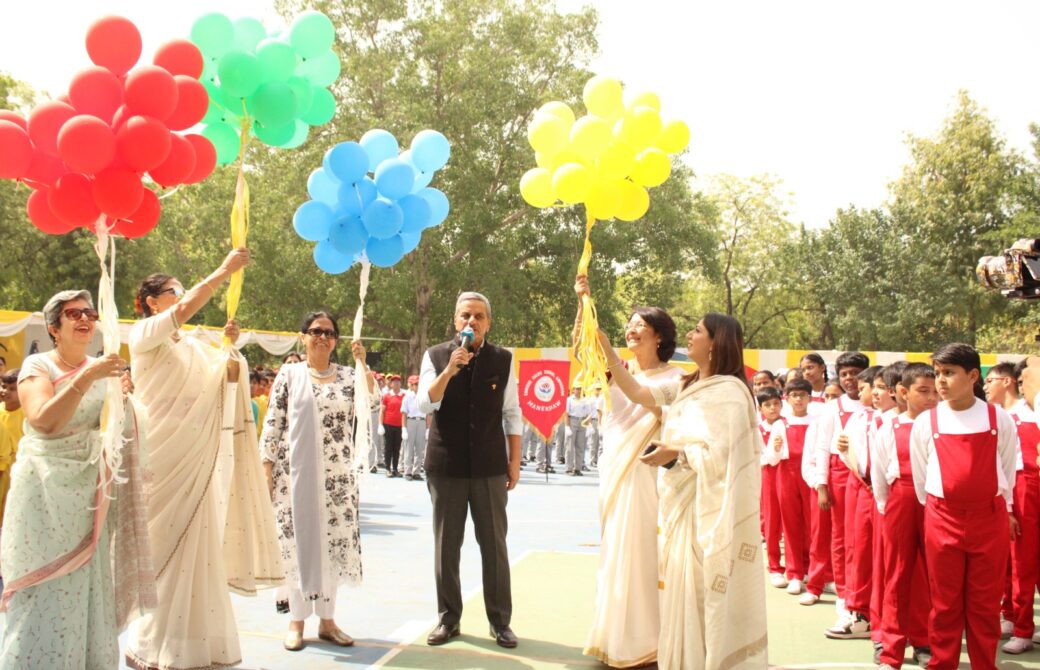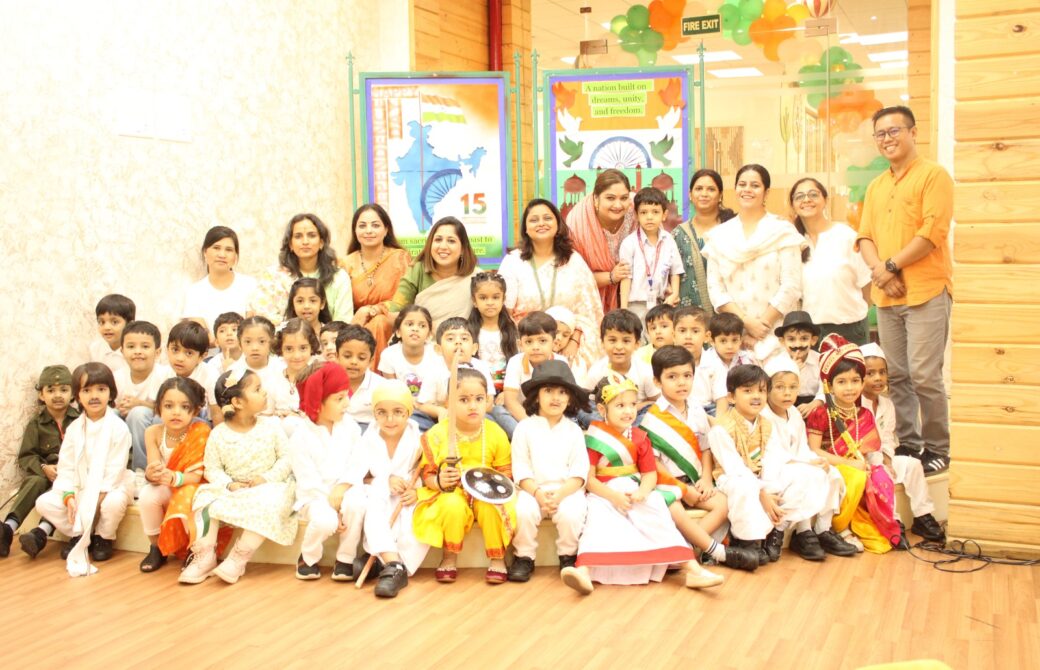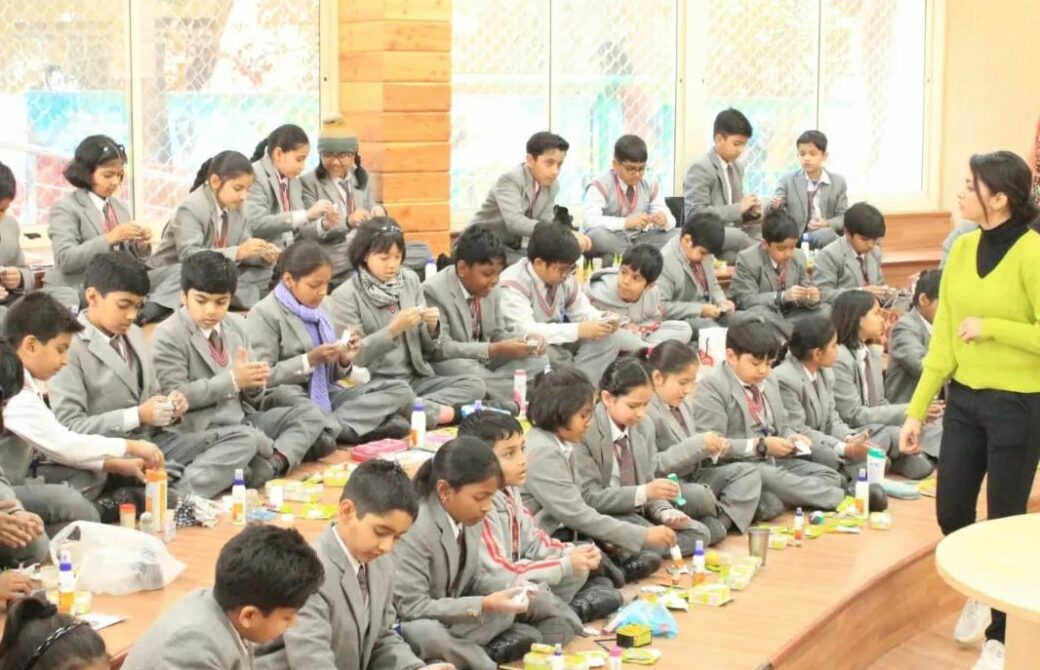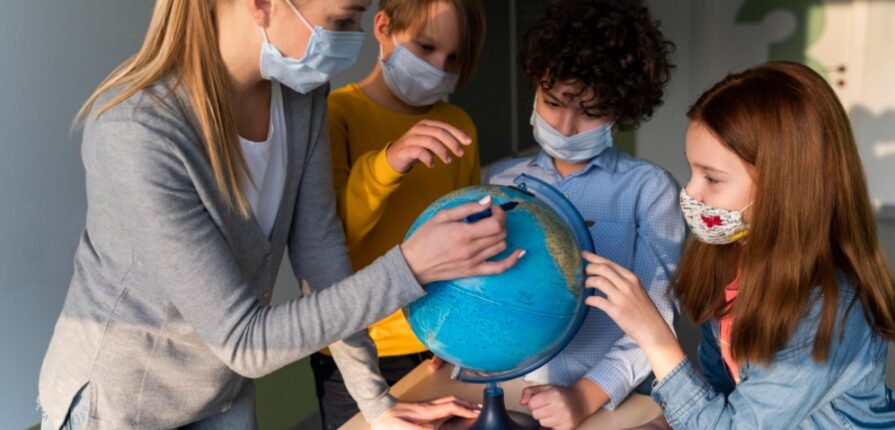Introduction:
In today’s interconnected world, education has moved far beyond classroom walls. At Summer Fields School Gurugram, the Best Schools in Gurugram where students are no longer confined to local perspectives; they are part of a global community that demands cultural awareness, adaptability, and cross-border collaboration. Recognizing this shift, the CBSE schools are integrating student exchange and international programs into their curriculum to provide learners with authentic global exposure.
These initiatives don’t just enhance academic understanding—they prepare young minds to thrive in multicultural environments, fostering empathy, communication, and leadership skills that define true global citizens.
About Us:
At Summer Fields School, our aim is to shape young minds into global citizens. Our international exposure initiatives and student exchange programs bring global perspectives right into the classroom. Through partnerships, guest lectures, virtual global classrooms, and exchange visits, students encounter diverse cultures, broaden their worldview, and develop cross-cultural adaptability. Our extracurricular offerings—debate & Model United Nations clubs, foreign language learning, overseas collaboration projects—support this immersive global learning. We regularly host international-themed events, global days, and technology-enabled exchanges that encourage empathy, communication, and respect for different cultures. Combined with our strong CBSE curriculum, specialized mentoring, and modern facilities, we equip students not just to compete academically, but to thrive in an interconnected world. Every “Summerite” grows confident, curious, and globally aware.
The Evolving Purpose of Education in a Globalized World
Education today is not just about mastering subjects—it’s about developing the ability to think critically, communicate effectively, and adapt confidently in diverse situations. As industries and communities become increasingly interconnected, schools must nurture a global mindset in students.
International exposure through exchange programs introduces learners to new perspectives, enabling them to understand global issues, respect cultural diversity, and think innovatively. The CBSE schools have recognized that preparing students for the 21st century means blending academic rigor with experiential, multicultural learning.
What Are Student Exchange and International Programs?
Student exchange programs are structured opportunities where learners temporarily study in partner schools abroad, while international programs include collaborative projects, global classroom sessions, cultural festivals, and virtual exchange initiatives.
These experiences allow students to interact with peers from different countries, immerse themselves in new educational systems, and gain firsthand knowledge of global practices. Whether through short-term cultural visits or year-long study programs, the benefits are transformative and long-lasting.
1. Broadening Cultural Horizons
The first and most evident advantage of international exposure is cultural understanding. Students experience new languages, traditions, cuisines, and lifestyles, helping them appreciate diversity and develop respect for other cultures.
- Learning Beyond Textbooks : Instead of reading about world cultures in social science chapters, students live those experiences—attending local schools, participating in community events, and adapting to unfamiliar social norms.
- Developing Empathy and Tolerance : Living and learning alongside students from varied backgrounds fosters empathy. Learners become more open-minded, respectful, and understanding—qualities that are essential in today’s globally connected world.
2. Enhancing Academic and Intellectual Growth
Student exchange programs expose learners to different teaching methods and learning environments. They discover that education can take many forms—from research-based learning in European institutions to project-driven study models in the United States or Asia-Pacific.
- Exposure to New Learning Styles : By adapting to diverse academic structures, students develop critical thinking, problem-solving, and independent learning skills. They become more flexible learners capable of applying concepts creatively.
- Building Academic Confidence : Engaging in discussions with international peers boosts confidence in communication, analytical reasoning, and presentation—skills that prove invaluable for higher education and global careers.
3. Building Global Competence
Global competence refers to the ability to understand global issues, collaborate across cultures, and take action for collective well-being. The CBSE schools promote such competence through programs that blend academics with cross-cultural exchange.
Through these experiences, students learn to view challenges—like climate change, sustainability, or technology—from multiple perspectives. This understanding shapes them into proactive individuals who can contribute meaningfully to the global community.
4. Strengthening Language and Communication Skills
One of the most practical benefits of exchange programs is linguistic enrichment. Immersed in a multilingual environment, students improve their communication skills and often pick up new languages.
Beyond fluency, they gain the confidence to express ideas clearly and respectfully in cross-cultural contexts—a vital skill in global universities and workplaces.
5. Promoting Leadership and Independence
Living or studying in a new environment pushes students out of their comfort zones. They learn to make decisions, manage time, and adapt to new settings—developing self-reliance and emotional maturity.
Whether navigating transportation, managing finances, or collaborating on group projects, students acquire leadership qualities that extend far beyond traditional education. These experiences teach them resilience, adaptability, and problem-solving—all crucial for success in life and career.
6. Fostering Collaborative Mindsets
The world today thrives on teamwork that transcends borders. International collaborations teach students how to work with people of different viewpoints and values.
In global projects—be it virtual science experiments, model UN simulations, or social innovation challenges—students develop the ability to negotiate, collaborate, and innovate collectively. This global teamwork mindset becomes a cornerstone for their professional and personal growth.
7. Creating Career and University Readiness
Participation in exchange or international programs significantly boosts a student’s profile when applying for higher education. Universities worldwide appreciate applicants who demonstrate cross-cultural experience, adaptability, and initiative.
- Exposure to Global Universities : Some programs include visits to leading international universities, where students attend workshops, interact with professors, and gain insight into international academic standards.
- Enhancing Employability : Global experience gives students an edge in the job market. They develop international networks, cultural intelligence, and real-world skills—attributes that multinational employers value highly.
8. Encouraging Social Responsibility
Global exposure teaches students that they are part of a larger world where their actions have collective consequences. Exchange programs often include community projects focused on sustainability, education, or social welfare.
Such activities inspire compassion and responsibility. Students return with a deeper awareness of global challenges and a commitment to making positive changes in their communities.
9. Integrating International Learning at School Level
The CBSE schools integrate global learning seamlessly into their curriculum. Instead of treating exchange programs as extracurricular activities, they embed global exposure within everyday learning.
- Virtual Exchange Platforms : Technology now allows schools to organize virtual collaborations with international institutions. Through online debates, cultural festivals, and joint science projects, students connect with peers across continents without leaving their classrooms.
- International Guest Lectures and Workshops : Inviting global educators and professionals to conduct workshops exposes students to global trends in education, sustainability, and innovation.
- Cultural Days and Global Weeks : Annual events celebrating international cultures, cuisines, and languages create immersive learning experiences that develop curiosity and respect for global diversity.
10. The Role of Teachers in Global Learning
Educators are the facilitators who make global programs effective. Teachers trained in international pedagogy help students bridge cultural gaps and reflect on their experiences meaningfully.
They guide pre-departure orientations, encourage intercultural understanding, and ensure that students connect classroom learning with real-world global insights. This mentoring transforms experiences into lifelong lessons.
11. Technology as a Bridge to Global Exposure
Digital platforms have revolutionized how students interact globally. Virtual classrooms, collaborative apps, and global forums allow learners to engage in real-time discussions with peers around the world.
Schools are leveraging these technologies to create blended models of global education—combining physical exchanges with digital collaborations. This not only expands access but also ensures consistent exposure to diverse cultures and ideas.
12. Real Stories of Transformation
Students who participate in exchange programs often describe them as life-changing experiences.
A learner who spent a semester in Japan might return with a newfound appreciation for discipline and teamwork. Another who joined a European environmental project may develop a passion for sustainability. Such real-world exposure opens up new academic interests and career aspirations.
These programs do more than build resumes—they shape worldviews.
13. How Parents Benefit from Global Education Initiatives
Parents today seek education that equips their children for the global stage. Exchange and international programs give families the assurance that their children are developing not only academic strength but also emotional intelligence and cultural literacy.
Through regular communication and orientation sessions, schools keep parents involved, ensuring that they understand the objectives and outcomes of global exposure programs. This partnership strengthens trust and enhances the learning experience.
14. Global Citizenship: The Ultimate Goal
The essence of modern education lies in developing global citizens—individuals who respect diversity, embrace innovation, and work toward a sustainable future.
By promoting international collaboration, schools help students see themselves as part of a larger human community rather than isolated individuals. This sense of belonging to a shared world instills empathy, cooperation, and a strong moral compass.
15. Overcoming Challenges in Exchange Programs
While the benefits are immense, global programs also present challenges like cultural adjustment, homesickness, and financial concerns. The CBSE schools address these with structured mentoring, pre-departure orientations, and partnerships that ensure safety and inclusivity.
Students are encouraged to embrace challenges as opportunities for growth, building resilience that prepares them for future international ventures.
16. Aligning with National Education Goals
These global initiatives align with India’s National Education Policy (NEP 2020), which emphasizes multidisciplinary learning, creativity, and global engagement. By implementing student exchange and cross-border programs, schools are directly contributing to the creation of globally competent, future-ready learners.
17. Nurturing Values Through Global Exposure
Beyond academics and skills, exchange programs strengthen values such as respect, gratitude, cooperation, and humility. Interacting with students from different socio-economic and cultural backgrounds helps learners appreciate what they have and motivates them to contribute positively to society.
This holistic development forms the moral foundation that distinguishes well-educated individuals from merely well-informed ones.
18. Preparing Students for the Future of Work
The workplaces of tomorrow will demand multicultural collaboration, adaptability, and continuous learning. Students who have participated in global programs are already ahead—they are confident communicators, creative problem-solvers, and empathetic leaders.
They understand global trends, emerging technologies, and cross-cultural ethics—skills that define successful professionals in the 21st century.
19. Building Lasting International Partnerships
Strong partnerships between schools across countries create a network of shared learning. These collaborations include cultural exchanges, joint research projects, and faculty development initiatives.
Such alliances promote sustainability in global learning, ensuring that every new batch of students benefits from established relationships and evolving opportunities.
Conclusion:
In a rapidly globalizing world, education must transcend boundaries. At Summer Fields School Gurugram, the Top Schools in Gurugram where they exemplify this shift by embedding student exchange and international programs into their learning ecosystem.
Through these experiences, students don’t just gain academic knowledge—they acquire empathy, independence, and a sense of belonging to a global family. They learn to celebrate diversity, communicate across cultures, and contribute meaningfully to a world that thrives on unity in diversity.
When education expands beyond borders, learning transforms into an inspiring journey of self-discovery and global connection—shaping young learners into visionary leaders of tomorrow.
FAQs:
Q. 1 What is the main objective of student exchange programs?
Ans : These programs expose students to different cultures, teaching global awareness, adaptability, and intercultural communication — key skills for the modern world.
Q. 2 How do international programs enhance classroom learning?
Ans : They connect theoretical knowledge to real-world global contexts, helping students understand diversity in thought, lifestyle, and education systems.
Q. 3 What are the long-term benefits of participating in global exchange programs?
Ans : Students gain independence, global competence, leadership skills, and a network of international peers, enriching both personal and professional growth.
Q. 4 Are international programs suitable for all age groups?
Ans : Yes. Early exposure helps build open-mindedness, while older students develop academic and professional global perspectives.
Q. 5 How do schools ensure safety and value-based learning during these exchanges?
Ans : Partner institutions are carefully vetted, and exchange experiences are guided by trained mentors who ensure safety, learning, and cultural sensitivity.
Q. 6 Why do top CBSE schools focus on global exposure initiatives?
Ans : Because global understanding prepares students for success in international universities, workplaces, and multicultural societies.









